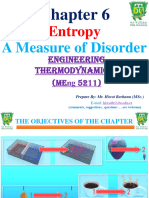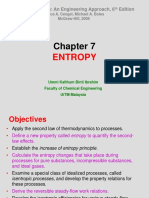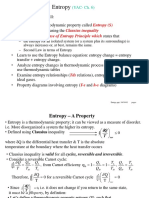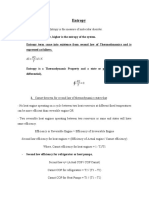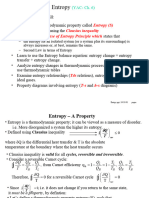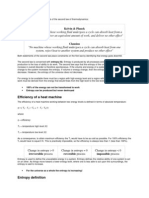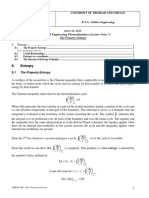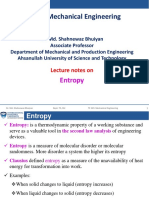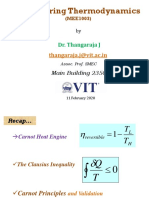0% found this document useful (0 votes)
6 views18 pagesEntropy
The document discusses the concept of entropy in thermodynamics, defining it as a measure of molecular disorder and a property that increases with system disorder. It outlines the Clausius inequality related to the second law of thermodynamics and explains the distinction between total entropy and entropy per unit mass. Additionally, it includes examples involving the Carnot cycle engine and the application of the second law to control volumes.
Uploaded by
clydejesseelcamel098Copyright
© © All Rights Reserved
We take content rights seriously. If you suspect this is your content, claim it here.
Available Formats
Download as PDF, TXT or read online on Scribd
0% found this document useful (0 votes)
6 views18 pagesEntropy
The document discusses the concept of entropy in thermodynamics, defining it as a measure of molecular disorder and a property that increases with system disorder. It outlines the Clausius inequality related to the second law of thermodynamics and explains the distinction between total entropy and entropy per unit mass. Additionally, it includes examples involving the Carnot cycle engine and the application of the second law to control volumes.
Uploaded by
clydejesseelcamel098Copyright
© © All Rights Reserved
We take content rights seriously. If you suspect this is your content, claim it here.
Available Formats
Download as PDF, TXT or read online on Scribd
/ 18

